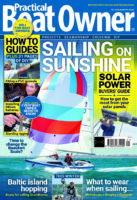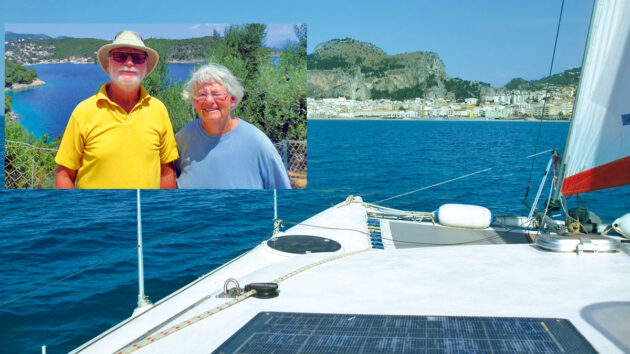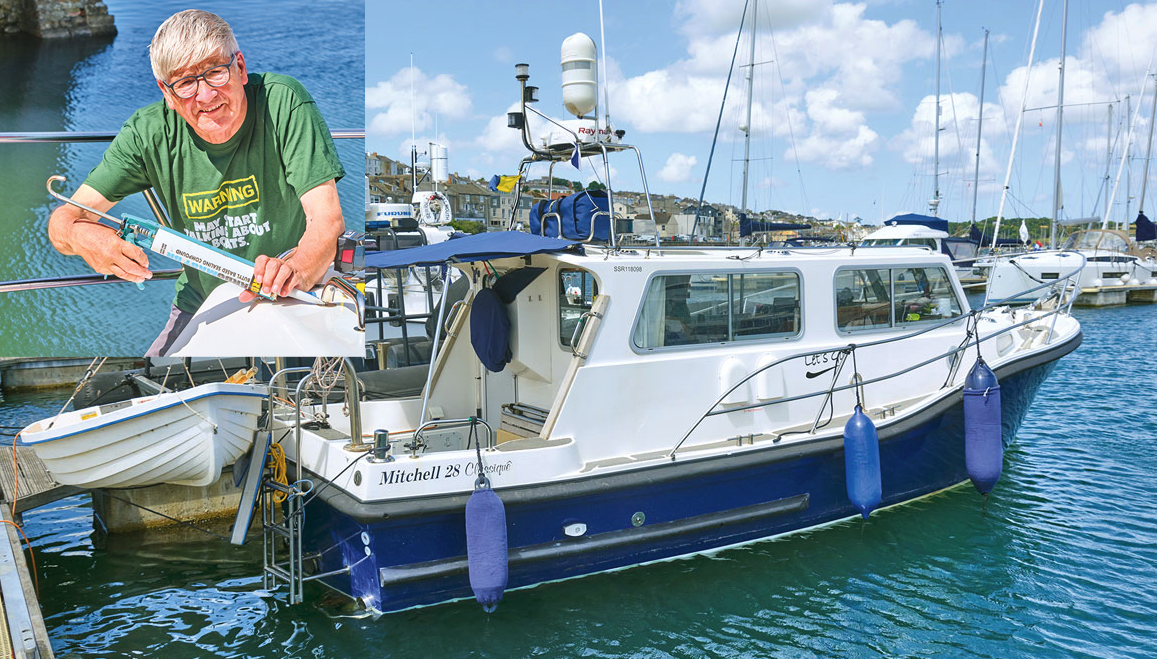Tony and Ann Montgomery-Smith have been sailing for almost 60 years. Now both in their 80s, and with Ann’s Alzheimer’s diagnosis, Tony explains how they have continued to cruise
Sailing together for nearly 60 years, my wife Ann and I have, for much of that time, been members of The Cruising Association, writes Tony Montgomery-Smith.
Ann started as a novice, but soon became our chief navigator, and this was in the days even before Decca, let alone GPS, when navigation offshore on a small sailing boat required genuine skill.
We sailed as joint skippers, and each stood our own watches on overnight sails. We took our Yachtmaster certificates together and, for a time, Ann taught Yachtmaster theory.
However, gradually over the last 10 years, her memory and general skill level have become degraded, although she is still physically pretty fit.
Her Alzheimer’s diagnosis means she can no longer sail the boat without detailed instructions for nearly every task. And the instructions have to be free of any nautical terminology.
Sailing with Alzheimer’s: Direct instruction
So not only does she not recognise, for instance, that the mainsheet needs tightening; she does not know what to do when I ask her to tighten the mainsheet.
Instead, I need to say something like: “Wind the blue and white rope in front of you round the winch, and wind it in until I say ‘enough’”.
So far, she still knows her colours, and can usually locate the winches and clutches. And she remains her cheerful and affectionate self, which makes it bearable for both of us.
I suppose many would say it was time to ‘swallow the anchor’ – after all, we’re both in our 80s.
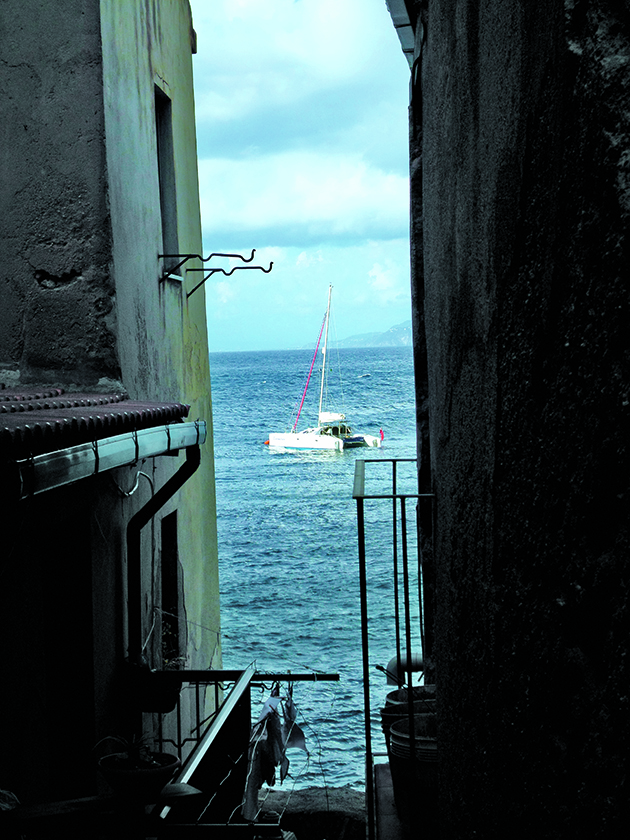
The Dazcat 9.2 does not roll when anchored off a beach at night, and the gear is easily manageable. Credit: Tony Montgomery-Smith
But we both still enjoy our summers pottering around the lonian, anchoring in beautiful places and meeting old friends.
Also, I firmly believe sailing is possibly the best way to remain fit in old age, with its mix of varied but not excessive exercise, fresh air and changing scenery.
So I’m trying to find the best way to continue. I don’t want to sail single-handed with Ann as a passenger, partly because running our boat is much easier with two crew, and partly because I think it’s best for Ann to play an active part.
Our sailing activities aboard our Dazcat 9.2 catamaran Razzmatazz are broadly mooring and setting out; raising and lowering the sails; adjusting the set of the sails; starting and stopping the engine; setting a course; and steering. Mooring for us nearly always means anchoring, either free or with long lines to the shore.
Our anchor is a 15kg Rocna, on 7mm chain (which is about 30% lighter than 8mm), and we usually manage to anchor in depths of 5m or less.
For several years, it has been Ann’s job to deploy the anchor and attach the bridle, and also to recover and stow it, with my assistance in depths over 6m or so.
Apart from needing a reminder at the start of the season, Ann has been able to continue doing all this successfully.
Incidentally, we’ve not installed a windlass, partly because I can’t see any way of mounting it on our catamaran to resist the forces involved, and partly because we don’t really need one.
We do have a lever and pawl which trebles our lifting power, even if it is rather slow. If we need lines ashore, I usually do this, as Ann is not a strong swimmer.
But she sometimes recovers them as she can use the lines to pull herself to and fro.
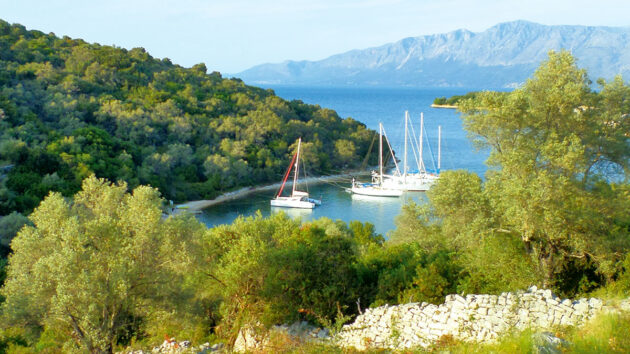
Anchored at Laki, Greece. Credit: Tony Montgomery-Smith
Raising and lowering the sails is also hardly affected by Ann’s Alzheimer’s. The jib is raised once at the beginning of the season. Setting just involves unrolling it.
However, I have to remind Ann that this is accomplished by pulling the green rope in front of her after taking a turn on the winch, and that she needs to uncleat the blue furling line on the deck to her left.
To set the main, Ann stands at the mast, attaches the head to its car with a cotter pin, and pulls the halyard, while I pull the halyard in the cockpit and use the winch to get the final tension.
I do have to check that she’s inserted the cotter pin, as she has forgotten once or twice. However, setting the gennaker is more complicated.
The halyard end has to come off its parking place on the end of the prodder; the sail needs unpacking and its foot attached to the end of the prodder; then the halyard needs to be attached to the head of the sail; I hoist three-quarters of the way; Ann attaches the sheets to the sail; I complete the hoist; Ann threads the endless furling line through the A-bracket, attaches its double guide pulley to a karabiner on the prodder and passes its end to me. Ann can still do all this, but I have to talk her through each step.
Adjusting the set of the sails is, however, radically affected by Ann’s condition.
She no longer understands how the sails work, so she can no longer make any adjustment on her own initiative.
And giving her instructions that she will understand is a challenge, as she doesn’t remember the names of any of the running rigging.
She can remember colours, so I’m changing the rigging that, over the years, has ceased to have colours that indicate its purpose.
The most complicated operation is gybing.
Downwind, we detach the traveller from the mainsheet car and reattach it to the end of the boom, and move the traveller guide pulley from the end of the traveller track to an eye near the shroud chain plate, so that the rope becomes an outhaul.

Tom and Ann have continued to cruise in Greece, including harbours like Vathi, Ithaca. Credit: Tony Montgomery-Smith
Gybing involves undoing all this on one side and then doing it for the other. I have to steer through all this, as the autopilot can’t cope with the changes in sail balance. So I have to talk Ann through the process.
We manage, but with several false moves along the way. Our engine is a centrally mounted outboard.
I upgraded to one with an electric start a few years ago, as Ann could no longer start by hand, and she can now deal with it fairly reliably.
But I do have to remind her every time to stop with the stop button and not the starter!
Finally, I always now set our course, as Ann no longer knows where we are or where we’re going.
Our catamaran has two steering wheels.
When tacking, the helmsman puts the boat about, lets go of his wheel and pulls in the jib sheet. The other person lets go of his jib sheet and takes over steering using his wheel.
We still do this, with me issuing instructions to Ann. And more often than not, Ann manages to steer the boat on her tack successfully.
If she steers straight into the wind, or onto a broad reach, I take over.
On a reach, Ann can steer okay if there is a clear landmark to aim for. Or we can use the autopilot.
The same applies on a run in light winds; in stronger winds with the risk of an unintended gybe, I steer by hand.
In summary, we’re managing, and have had another enjoyable season. And Ann knows that she remains my chosen shipmate regardless of her condition.
Never stop sailing! Practical ways to make it easier as you age
Gilbert Park explains the tweaks he has made to his boat to future-proofing his time afloat
Sailing with limited mobility: a practical guide
Deteriorating mobility has forced Kerry Buchanan to modify habits aboard – but she’s still sailing!
Why we swapped sail for power: 10 motorboaters explain their big switch
Many moons ago I had a premonition that Hunter Boats ought to build a classy little motorboat for customers who…
Want to read more articles like Cruising with Alzheimer’s: how one couple have adapted to continue sailing together?
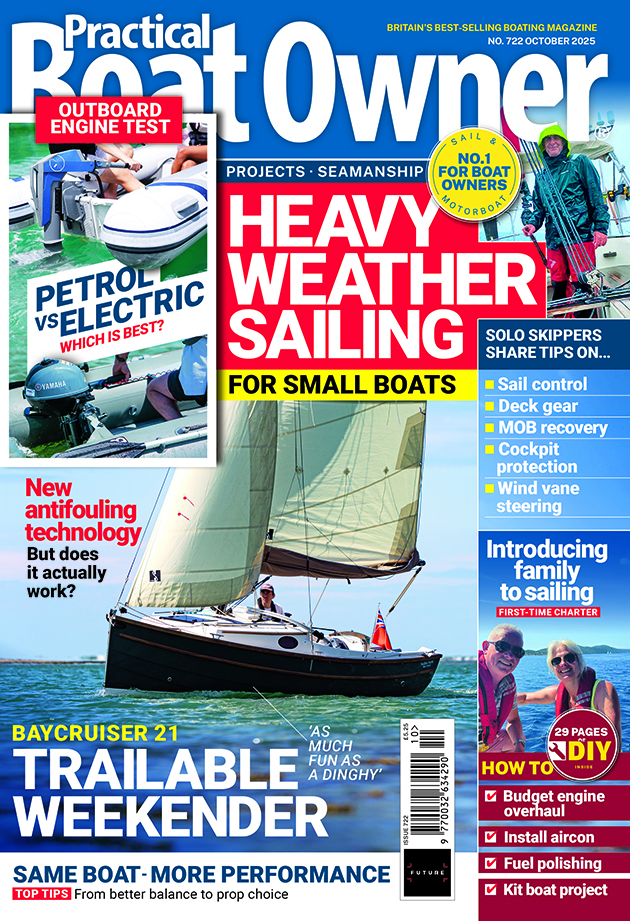
A subscription to Practical Boat Owner magazine costs around 40% less than the cover price.
Print and digital editions are available through Magazines Direct – where you can also find the latest deals.
PBO is packed with information to help you get the most from boat ownership – whether sail or power.
-
-
-
- Take your DIY skills to the next level with trusted advice on boat maintenance and repairs
- Impartial, in-depth gear reviews
- Practical cruising tips for making the most of your time afloat
-
-
Follow us on Facebook, Instagram, TikTok and Twitter

